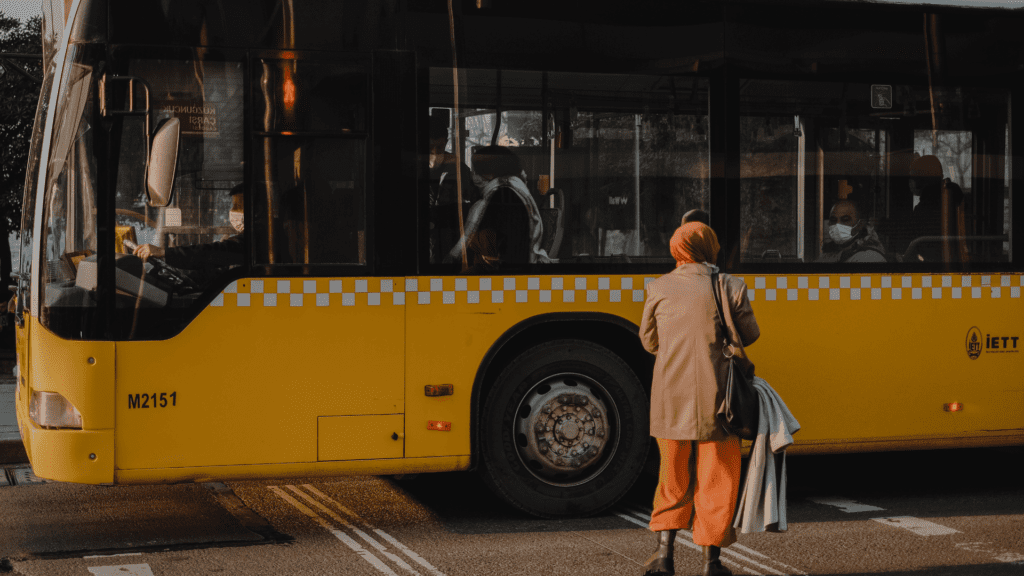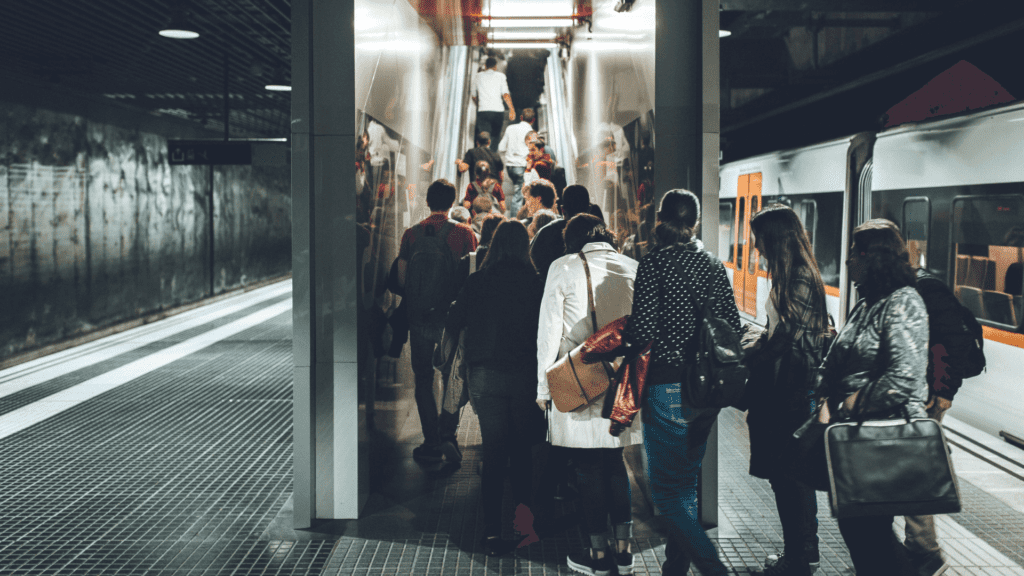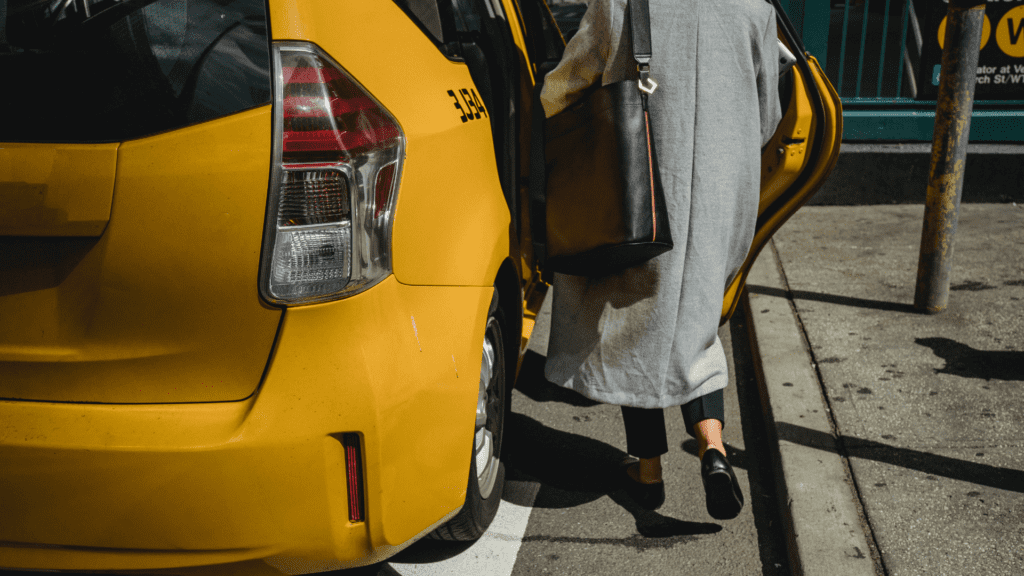Gender Inequality in Urban Mobility
Women are some of those most affected by inaccessible or unsafe modes of transport.
Viewing mobility issues through the leans of gender inequality is key to ensuring inclusive, safe and equal mobility for all. The transition to decarbonized transport systems must prioritize affordability and accessibility.
REVOLVE talked to Rita Jacinto, Program Manager at the Division for Pedestrian Mobility in Lisbon, Portugal, whose work focuses on pedestrian accessibility as well as women in mobility, safety and convenience for women in transit.
Why is it important to consider gender when addressing mobility challenges?
Women have different mobility patterns from men. Women have what is called ‘trip chaining,’ so several interconnected trips throughout the day, that are not as long as the average trips that men are doing. So, if a family has a car, it is much more likely that the man drives the car. He might commute for a longer time, or perhaps a longer distance, but he will be inside the car, and it will be one trip.

Women do 75% of the world’s unpaid care work. We’re talking about grocery shopping, taking the kids to school, taking another relative to the doctor, doing some errands for their family. Most of public transport users, or people walking, are women. It’s very important to look at their mobility patterns and the conditions women face while doing these errands. Every time we invest in car-centric policies, we are investing mostly in men and not as much in the mobility patterns of women.
How can the study of gender disparities in mobility contribute to building a more equitable mobility sector?
In terms of research and data, it’s important to look at what you measure and how you measure it. We cannot just measure which means of transport people take and if they are sustainable. How satisfied is the person? And what would be the behavior if the person got a larger salary? From my experience with some women, they tell me that if they had a driver’s license or if they had the money to have a car, they would take this option and they are only taking public transport because they cannot afford to do something else. If users would be more satisfied with public transport, walking or cycling, perhaps those taking the car would have a greater modal shift towards taking sustainable transport options.
Every time we invest in car-centric policies, we are investing mostly in men and not as much in the mobility patterns of women.
What exclusion factors need to be urgently tackled and what solutions do you propose?
We need to talk about infrastructure and what policies are put in place and how. We need places where women feel safe. There needs to be good lighting, no dark scary alleys, the bus needs to stop closer to home or stop close to where there’s other people. And a number to call if women feel in danger, with someone on the other side prepared to respond. We need places to leave grocery bags and toilets where you can also take children or older people, for example. All these infrastructural factors need to be in place for women not to feel excluded or uncomfortable or unsafe.
In one of our projects, a woman explained that every morning she walked to her son’s nursery to drop him off and then walked to take the bus to work. The nursery didn’t have a place for her to leave the stroller, so she had to carry her son in her arms with everything else she had to carry. She complained that sometimes she had grocery bags or her other child and she didn’t have a free hand. We can’t just look at the fact that there’s a bus stop in front of the nursery and she’s taking the bus. These situations need to be adjusted and made convenient. It may seem like small things, but they make a huge difference in all these different mobility patterns.

For instance, one could have a look at what’s making women so afraid of taking the bus in certain places and times. Imagine you’re afraid at a bus stop alone at night after a party: if you’d have the financial possibility, maybe you’d call an Uber so as not to be in that situation and go home. But if that’s your daily life, if you are doing a cleaning job in the city center and live far away, you’re doing shift work and you wake up at 4:00 in the morning, you’re not going to call an Uber every day. This is totally different. You just wait for the bus, afraid, day after day. If we only look at the exclusion factor, these women aren’t being counted as ‘excluded’ because they are still taking the bus, but they may hate the position they’re in.
We need places where women feel safe. There needs to be good lighting, no dark scary alleys, the bus needs to stop closer to home or stop close to where there’s other people.
We know that men and women have different trip patterns, but the male trip pattern has shaped our transport policies and transport systems. How can we change that?
We need to have disaggregated data. We need to investigate detail. And we need to act on it on the ground, real action and real change, embedded in a vision for the city we want to live in.
If I tell you that around 75% of people in Lisbon know how to ride a bicycle, perhaps that’s okay. One of our studies tells us that approximately 90% of men know how to ride a bike, but only 61% of women do. Disaggregating data is hugely important to know that there may be an issue. If you just look at the bigger picture, you don’t get all the right information.
These patterns usually disregard safety and security aspects, essential for women. How can this be addressed?
It’s important to consider what women need when they move: the small trips, the last mile trips, the lighting, the location of stations, accessibility, infrastructure where you can leave your strollers, or where you can leave bags. Someone who drives to work told me that her job doesn’t provide parking spaces anymore. I encouraged her to cycle, and she told me about the clean desk policy. She had to carry her laptop with her every day, her gym material, the grocery bags, and in the end the bag was too heavy. Companies must be part of this change as well. If you’re always carrying everything on your back, of course it is not comfortable, a lot of people would just prefer to put it in the boot of a car.
What generally makes women feel unsafe on public transit?
Sexual harassment is a highly underrated offense, and it’s really affecting not just adult women, but also girls in their mobility options. It influences the trips they take, if they change streets, if they avoid a dark alley or a dark station, if they hide behind their clothes. It’s just accepted that women shouldn’t do this or shouldn’t do that because they’re women. This shouldn’t be normalized. Women are as entitled as men to use public space, day and night.
When women complain about sexual harassment, they might not even call it sexual harassment because it’s so normalized. But if a woman takes the step and has the courage to denounce the harassment, staff are often not prepared to receive the complaints or there’s no procedure in place. A woman once told us she complained to the bus driver that a man had inappropriately touched her inside the bus, and the driver answered, “If he does it again, tell me.” This is not acceptable. I believe the bus driver also didn’t know how to react in any other way. We can’t just blame the person for not knowing how to react, we need to give them the tools, collect the information and do something about it. It will be a deterrent and women will feel more empowered. Women should not feel forced to take a car because they feel unsafe in public.
Could you tell us more about your Project in Bairro Padre Cruz?
We had been putting the topic of women in public spaces on the agenda for some time in the city council and interviewing different women with different mobility patterns. We thought we should do a pilot project and really put this into action. We came to the neighborhood of Bairro Padre Cruz, which is mainly a social housing neighbourhood and many women work in shifts taking the bus to the city center. The neighborhood has access to the bus, but there are no train stations, no tube station and no shared mobility schemes.

We involved the local associations to find out how women think about public space, how their access to public transport is and perhaps how to make it better. We asked them questions about how they felt in public spaces throughout the neighborhood, dividing it by themes such as road safety, accessibility and sexual harassment. We had the map of the neighborhood and by theme we asked them about places where they would and wouldn’t feel safe to go and why. We involved teenagers from a local school, adults, working and unemployed women, women with children and older women.
We focused on the infrastructure. As a result of our project we planned the redesign of some streets, as well as new locations for some bus stops. There was no bus going through what we considered the liveliest street of the neighborhood, the area with a café, the local market, the post office and the cultural center. We planned to redesign some streets of the neighborhood quite considerably, prioritizing convenience, accessibility and safety factors.